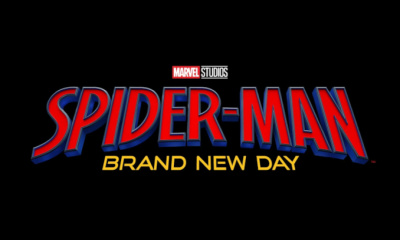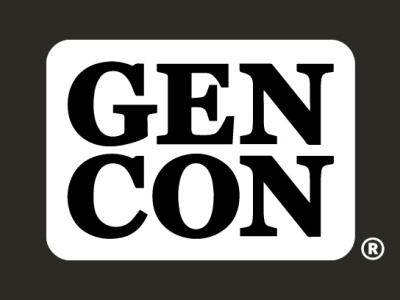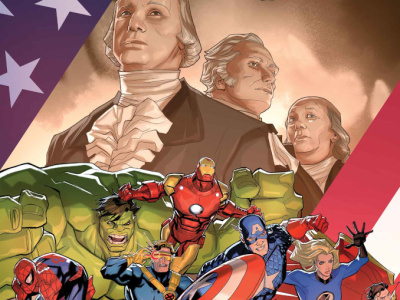
Recently ICv2 caught up with Nick Barrucci the CEO of Dynamite Entertainment. In Part 1 of the interview, Barrucci talked about the state of comic and graphic novel markets, the loss of Borders, the decline in graphic novel sales, how Dynamite handles digital, and his estimate of the digital market in 3 years. In Part 2 he talks about the glut of trade paperbacks, the use of variant covers to spur sales, how Dynamite deals with creators’ rights, and plans for the white-hot Game of Thrones adaptation. In Part 3 the discussion shifts to other new Dynamite projects including one with Internet phenom Amanda Hocking, the launch of The Spider, and how he plans to capitalize on Disney’s The Lone Ranger movie.
Are you putting out more trade paperback titles than you were a year ago?
No.
Who do you see doing that?
Marvel and DC are definitely leading that. Although DC pulled back on some titles leading up to the "New 52" line, and I do think the "New 52" line for DC is going to do better than most trade paperbacks. I think they’re going to track very well on those. I think Marvel will do very well on Avengers vs. X-Men and some of the titles that they currently have, but overall currently Marvel and IDW are very aggressive in the collection business. I’m not tracking too many publishers. Image has a lot of trade paperbacks, but you have a lot fans dedicated to the writers or to the artists. People who want Walking Dead trades are getting Walking Dead trades; people who want Invincible trades are getting Invincible trades, but there’s still a lot more trades coming out. Image’s Eric Stephenson made sure that Image Comics was the #2 publisher for graphic novel collections. I think Dark Horse has a solid program: they have a nice mix of Star Wars--they have a dedicated Star Wars fan base; their Hellboy titles are strong; I believe they put out only about four Conan collections each year. I don’t see them over-saturating their market. Their Buffy trades are still strong. They have a very focused output as far as I can tell.
One thing that IDW is doing really well at is with the high price point graphic novel. I think that’s the future of the graphic novel business. Try to make them with as many bells and whistles as possible so that fans get more for their dollar.
Are you talking about artist editions and strip reprints?
I mean the artist editions. Strip reprints are down in sales, big time. The artist editions and the Teenage Mutant Ninja Turtle edition that they did that was oversized, sold like gang busters.
Last year you talked about the role of collectibility and your hope that the comics market would change so that variants would become less essential. How is that going for you?
Not well…(laughs). We’ve cut down on our variants, but we still do a lot of them because everyone else still does a lot of them. You’ll notice that we have some titles like the Bionic Man and Game of Thrones where there’s only one cover and perhaps a one-in-ten cover, or we may launch a title like The Spider with multiple covers for issue #1 and then have one cover for issues 2 and up but we’re still doing a lot of variants and a lot of incentives. Again, it’s because everybody else is doing them.
You wouldn’t do them if they didn’t work, right?
They are a lot less effective than they were in 2005 through 2007 and they’re still less effective than they were last year when I said they were losing their effectiveness. It has not gotten better; it’s gotten worse. They’re less effective.
What’s the demand trend for collectibles on the Dynamic Forces side?
The trend’s fine. We’re getting into some new categories that we will be announcing. Trading cards that we work on are just about the same as a year and a half ago, the last time we spoke. Lithographs are picking up a little, but not enough to get overly excited about. Autographed comics and variant covers on the high end are still doing about what they did a year and a half ago. There are some books that are more exciting that sell better, but overall we’re up maybe 15%.
That’s better than the trend from a year ago.
It’s absolutely better than the trend from a year ago. I don’t think we made up for what we lost from a year or two ago, but it is better. It’s going in the right direction.
There’s a lot of buzz right now about the big two and how they treat early creators, and then Image on the other side where creators can do what they want and retain all their rights. Where does Dynamite fall in the spectrum of creators’ rights?
I can’t comment on Marvel, DC, Image or anybody else. I don’t know what deals the creators sign. There are three sides to every story: each entity’s side and the truth somewhere in the middle. (You can add a smiley face to that one.) But I can’t comment on anybody else and I can’t get too far into what our deals are. Every deal’s different. Every deal’s based on sales expectations, on the creator, and candidly, what can be negotiated. What I will say is if you look at our history and the creators that we work with, whether it’s Garth Ennis, Alex Ross, John Cassaday, Jae Lee, you’ll see that we consistently work with all the creators plus we’ve grown our talent pool. Working with Liquid Comics we’ve been working with Grant Morrison, and that relationship is growing. We’ve got a few surprises coming.
One property that is red hot is Game of Thrones. What’s going with your Game of Thrones program?
The first story arc ended with issue 6 and then we released the hardcover collection with Random House, which is kind of funny. Earlier we were talking about how trade paperback and hardcover sales were down, yet sales of the hardcover Game of Thrones are unbelievably strong.
It’s a spectacular book. It’s beautiful.
Thank you very much. Everyone worked really hard, both at our end and at Random House. Of course we couldn’t have done it without Daniel Abraham and Tommy Patterson and the entire team. So we solicited the hard cover and now issue #7 is shipping this month. So it’s not that the program ended, it’s that each periodical is 29 pages. So instead of it being 22 pages and the artist being able to do a monthly book, we started a little further ahead, and when we were doing the hard cover edition, he needed the extra month for breathing room to catch up and get ahead again. That will be the pattern moving forward. When we do issues 7-12, there will be a one month break and a collection. Then we will publish 13-18, take a one month break and then put out a collection.
So you’re planning the one ongoing series with a break between each six issues between story arcs.
Exactly, I think that there are very few exceptions if you’re creating periodicals and graphic novels based on one prose novel, there’s no point in re-launching with a #1 every time. I truly believe that’s more of a jumping off point for consumers than a jumping on point. Consumers are tired of that. If you have one story, tell one story. The (Game of Thrones) periodicals are doing really well and our reorders on the periodicals, even the first six issues are strong. I think we sold out of one or two issues and we had multiple printings on a few of them.
Click here for Part 3.
Click here for Part 3.







